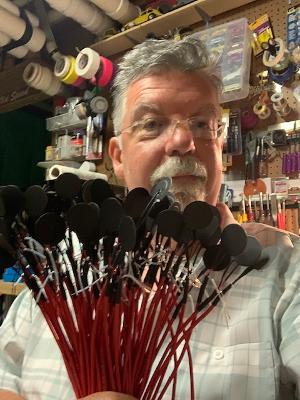Audio for the NBA’s New Season Is As Challenging As Last Year’s
Augmented crowd sound moves from a single venue to multiple arenas this season
Story Highlights
Last year’s NBA season debuted the use of “enhanced” ambient crowd sounds by U.S. sports to make games played under COVID-19 lockdown feel more authentic. As challenging as that initiative was, however, it was greatly helped by the fact that the majority of regular-season games and all playoff matches were played in a single location: Disney’s Wide World of Sports (WWoS) complex in Orlando.
The new NBA season, which began on Dec. 22, is trying to replicate the success of that effort but is doing so as teams return to their respective arenas for a shortened, 72-game season.
“Last season was challenging, and this season is going to be even more so,” says Dave Grundtvig, lead A1 for Turner Sports’ NBA coverage.

A1 Dave Grundtvig helped design and build custom contact microphones deployed at the NBA’s WWoS venue last season.
Among the changes for the new season is full REMI audio production, with mixes done from Turner Sports’ Atlanta studios. Also, use and operation of augmented crowd sounds are being left to individual teams’ discretion.
Game audio is being produced by the home team’s technical staff, with feeds delivered to networks and RSNs. Two feeds are possible: a full-effects mix including microphones placed close to the court floor and on basket rims, and a “safe” feed, which excludes those lower-position microphones and is intended to avoid any player or coach vocalizations that could contain profanity, which would be considerably more intelligible in the mostly empty arenas, at least in the early part of the season.
“We learned in Orlando that doing a show from an empty arena was like working on a sound stage,” Grundtvig explains. “It’s not the same sound as when all of the microphones are open — the key mic, the net mic, the bench and camera mics. It’s a unique sound. But the NBA has to deliver its product all over the world in different versions, and the safe feed protects it from foul language.”
One notable development from last season was how Grundtvig and colleagues Alex Berman, senior manager, technical services, NBA, and Dave Bjornson, principal/owner, Hear Corp., a Pittsburgh-based broadcast-integration company (which also lists Grundtvig, who freelances as an A1, as a principal), designed and hand-built an array of 32 custom contact microphones placed beneath each of the three courts at the WWoS venue. That design isn’t feasible for this season’s more traditional model, but Grundtvig says Hear Corp. has sold kits containing those customized contact mics and deployment instructions to at least a dozen NBA teams.
“These are not the kinds of microphones that you’d typically find on a remote-production truck,” he says, adding that a broader array of high/ambient and low/close-in microphones helps give broadcasters some continuous sound in case a delay plunger has to be hit to censor any profanity. “RSNs with S&P [standards and practices] delays can be more aggressive with their audio when they have a full complement of microphones” coupled with the augmented crowd sounds.
Last Year’s Launchpad
Those crowd sounds are being generated on the same technology platforms used by the NBA last season. The kits, including a Launchpad controller for the sampled and team/venue-specific crowd sounds stored on a supplied laptop computer, are provided to teams through the league by Firehouse Productions, which developed the system for the NBA last year. These are being operated by locally hired A1s trained by Firehouse Productions.
Although all 30 teams are required to produce augmented-crowd sounds for broadcast, they are not required to have it audible in the venue. In addition, any use of that audio — its volume, intensity, types of sounds — will be determined by the home team, which will control and regulate it according to league standards.
However, crowd sounds were useful last season in providing aural continuity when low-positioned microphones catch any court sound that requires bleeping, a role they’ll likely play this season as well.
In the past, when crowd sound was used live, arenas have had to refocus their PA systems, turning some speakers away from the mostly empty seating to prevent reflections that can smear the sound, instead facing them toward the courts and, in some cases, augmenting the systems with additional speakers. Last season, it was discovered early on that the ballplayers found the crowd sounds energizing. The crowd noise on the court also enabled A1s to pick it up acoustically through their ambient microphones, mixing it in with the direct feed of the crowd sound from the Launchpads and conferring another level of sonic authenticity to the overall broadcast audio.
Grundtvig credits Steve Hellmuth, EVP, media operations and technology, NBA Entertainment, for envisioning and guiding the original crowd-sound initiative for the league and its continued application this season.
The unknown factor this year will be how each venue utilizes it, Grundtvig adds. “It’s going to be a bit of a challenge because the venues are all doing their own thing.”
